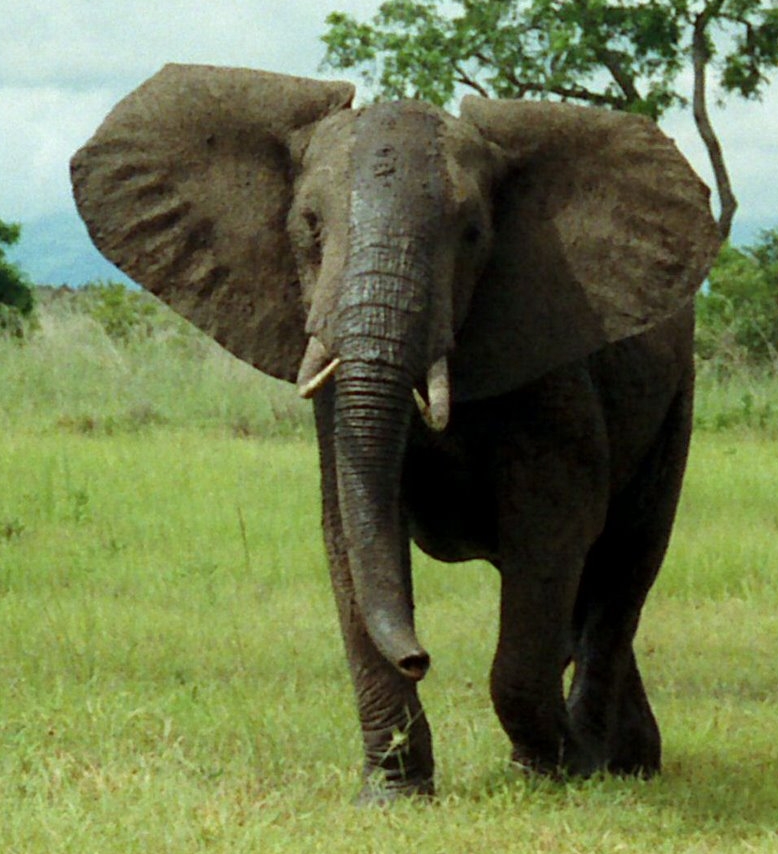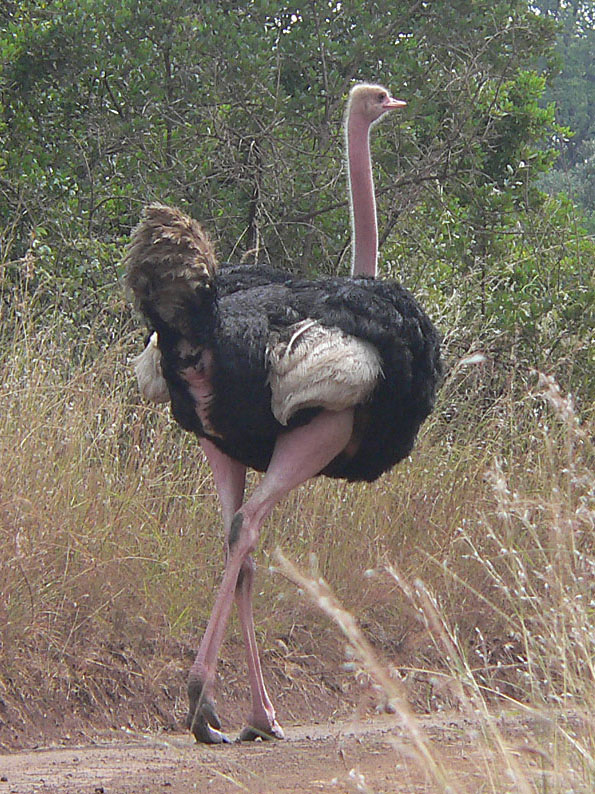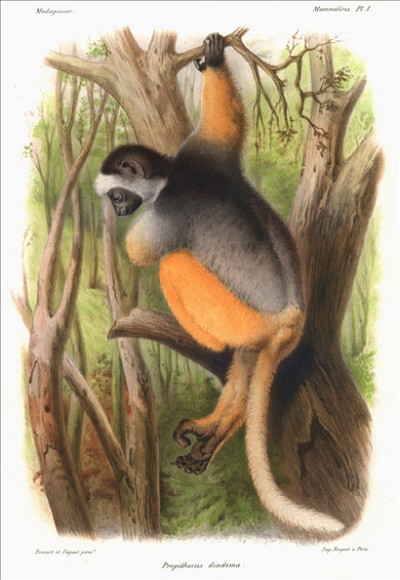This Earth is literally filled with fascinating creatures, whether we bother to take the time to appreciate them or not. The average person is only aware of fraction of these wonderful animals. However, some are awfully hard to ignore, even those that live deep in the ocean. Why are these animals in particular so hard to ignore? Well, that is because they are huge. In every animal class on Earth there is one species that dwarves all other species in their class or even the world.
(Note: At least one class has been skipped because there is some debate over which species is actually the largest within those classes.)
 |
Whale Shark photographed by
Zac Wolf |
Biggest Fish in the Sea: The Whale Shark
Whale sharks are sharks, which makes them fish. Unlike most other sharks, they are not aggressive. Some say they are so calm that human divers can ride them underwater like dolphins. Despite being sharks, they are filter feeders, like whales. Whale sharks feed by sucking food and water into their mouths then pushing the excess water out through their gills. They are dark gray in color with light white and yellow stripes and dots.
Whale sharks are the largest known fish in the world. They can grow to be more than 40 feet in length and weigh more than 35 tons. That is relative to the weight of an 18-wheeler, give or take a few tons. Whale sharks can be found in all of the tropical oceans of the world.
Biggest Worm in Terms of Length: The Bootlace Worm
There are many types of worms in the world, earthworms, parasitic worms, etc. The
bootlace worm is a type of ribbon worm that lives at the bottom of the ocean. These worms are carnivores with some interesting feeding habits. They attack their prey, wrap it up and then stab at it with a pointy nose appendage until the prey is dead. When touched (at least by humans), they secrete a thick, slippery mucus that is presumably a defense mechanism.
Bootlace worms are most often observed when they wash up on shore, at which time there true size is hard to discern. They tend to be curled up in knots instead of stretched out to their full potential, which is very impressive. The smallest of these animals is roughly 33 feet in length. Some specimens have been measured at roughly 180 feet. That makes this worm the longest creature on Earth.
 |
| African Bush Elephant |
Biggest Land Mammal: The African Bush Elephant
Most elephants are relatively large creatures, but the
African bush elephant is the largest. Weighing in at as much as 11 tons, these docile creatures are easily capable of crushing a human or predator. They can be as many as 24 ft. long and their lifespan is second only to that of humans, as far as mammals are concerned.
Keeping up such a massive body is not easy for African bush elephants, especially because they are herbivores. They must eat roughly 350 pounds of food daily. That is why habitat destruction is a major concern for these animals. African bush elephants need ample vegetation to support their herds. Herds of these animals can be found anywhere in Africa where the habitat still supports them.
African bush elephant herds are matriarchal. The oldest of the females looks over the females and calves. Male elephants live the lives of bachelors, only popping in every so often to impregnate females. Once impregnated, it takes the female nearly two years to give birth. This gestation period is longer than that of any other mammal.
Biggest Marine Mammal: The Blue Whale
The
blue whale is the largest mammal and animal on land or sea. In fact, it may be the largest animal to have ever lived on Earth. The largest specimen ever measured was more than 100 feet long. Some weigh more than 100 tons, possibly as many as 150 tons. These animals somehow subsist on some of the smallest edible creatures in the sea - krill. They must eat roughly 4 tons of krill daily. That is why it is very important that human activity does not upset even the smallest life forms in the ocean.
Blue whales are found in every ocean on Earth. They live in cold waters when they are not mating and migrate to tropical waters when they are mating and birthing. These animals were once prime targets for the harpoons of whalers because one specimen could produce massive amounts of oil. They were hunted so much that it became necessary to ban all blue whale hunting across the globe to protect their populations.
 |
| Dead Giant Squid Specimen |
Biggest Cephalopod on Earth: The Giant Squid and the Colossal Squid
Both the
giant squid and the colossal squid often take number one for largest cephalopod on Earth. That is because giant squids are thought to be longer while colossal squids are thought to be heavier. However, these animals have not been studied extensively in the wild, so it is hard to say which would win as far as average weight and length go. Both species are carnivorous. Rumor has it that they can best small whales in a fight.
Colossal and giant squids live very deep in all of the world's oceans. Therefore, most studies on these creatures have been done on dead specimens that wash ashore or are caught. They have not even been filmed extensively in their natural habitat. As for the giant squid, it has been filmed a couple of times near the surface after being lured by fishermen. That is the extent of it for now.
A giant squid's body, not including tentacles, can be twenty feet long, possibly more. The eyes of both the giant squid and the colossal squid are the largest on Earth, as far as we know. Of course, there could be larger, even creepier, invertebrates lurking in the depths of the Earth's oceans.
 |
| Australian Saltwater Crocodile |
Biggest Reptile on Earth: The Saltwater Crocodile
Saltwater crocodiles are found in the Pacific Ocean near Australia, India and Southeast Asia. They are known to be strong hunters and killers. They, like their crocodile and alligator cousins, are able to take down prey with careful hunting, strong jaws and deadly teeth. Out of all of these dangerous hunters, the saltwater crocodile is the most efficient and deadly. In fact, it has a reputation for killing humans that come too close to their waiting jaws.
Males are the larger sex when it comes to saltwater crocodiles. They are an average of 17 feet long and weigh roughly 1, 000 pounds. A human being does not have a chance against these large, strong killing machines.
Biggest Amphibian on Earth: The Chinese Giant Salamander
Chinese Giant Salamanders are not as large as some of the other animals on this list, but they sure are big for amphibians. The smaller specimens are roughly 1 foot long, while the largest can be up to five and a half feet long. They live in cold streams in China and eat frogs, fish, insects, crabs and shrimp.
Biggest Bird on Earth: The Ostrich
As far as this list goes, the closest things we have to living dinosaurs are the aforementioned saltwater crocodiles and the
ostrich. These huge African birds are formidable, though flightless. They are capable of kicking a human to death with their strong legs. They can run as fast as 43 miles an hour, making bounds as great as 16 ft. with one stretch of the legs. The largest of these birds can weigh more than 300 pounds and stand as tall as 9 feet. If you ever get the urge to mess with one of these birds, try to remember that velociraptors were smaller than ostriches are.
As wonderful as having an insect on this list would be, unfortunately, there is still some debate over what should be considered the largest insect in the world. There are insects that are quite larger in their larval stage. There are also insects that have yet to be found. There are also insects that are quite long, but light, while others are heavy and short. Therefore, it will have to suffice to say that the largest insect in the world is most likely a beetle. Thankfully, not even the biggest insect in the world is as large as any other animal on this list. Try to imagine an insect as big as an elephant or a blue whale. On second thought, some things are better left unimagined.
Sources
Ostrich, retrieved 2/17/11, animals.nationalgeographic.com/animals/birds/ostrich
Chinese Giant Salamander, retrieved 2/17/11, earthsendangered.com/profile-413.html
African Bush Elephant, retrieved 2/17/11, nature.org/animals/mammals/animals/elephant.html
Whale Shark, retrieved 2/17/11, nationalgeographic.com/animals/fish/whale-shark
Blue Whale, retrieved 2/17/11, acsonline.org/factpack/bluewhl.htm
Giant Squid, retrieved 2/17/11, animals.nationalgeographic.com/animals/invertebrates/giant-squid

_drinking_(8291632956).jpg)





_(5)_(182220936).jpg)



.jpg)
